Weeds, weeds everywhere, no seeds anywhere! If a farmer complaint like this, there is no surprise, because the weeds are the biggest headache of any farmers. It’s just like you are carrying a parasite in your stomach. Glyphosate 41% SL is a widely used weedicide or herbicide known for its effectiveness in controlling a broad spectrum of weeds. But is it a carcinogenic? Is it safe to use? How to use? Where to use? When to use?
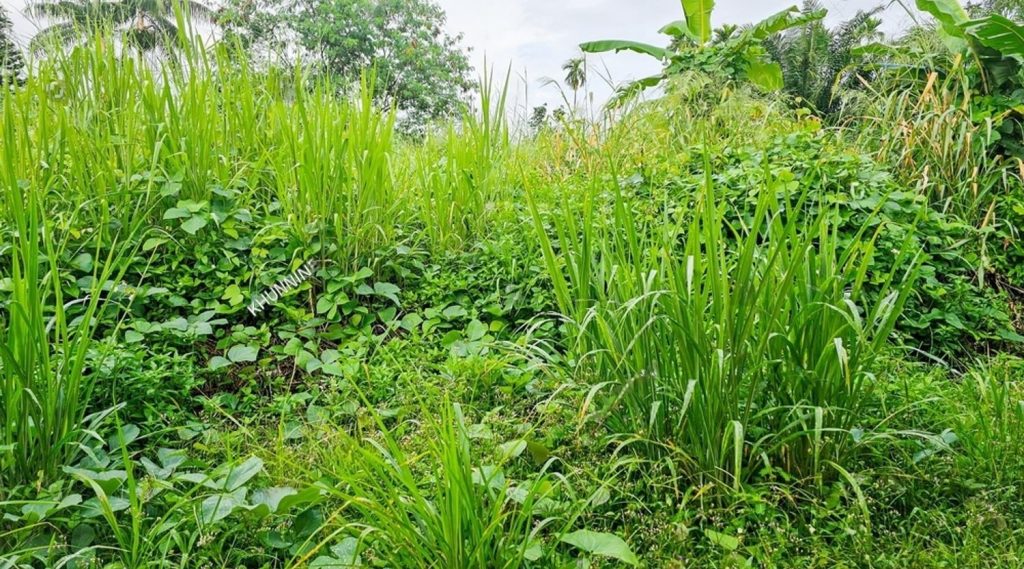
In this post, we will provide you with all the information you need to understand, apply, and benefit from Glyphosate 41% SL. Whether you are a farmer, gardener, or someone responsible for maintaining landscapes, this post will help you maximise the advantages of using Glyphosate 41% SL while ensuring safety and environmental responsibility.
What is Glyphosate 41% SL?
Glyphosate is the name of the active ingredient, this ingredient is what makes it a weedicide. “41%” is the concentration of the active ingredient in the complete product, remaining 59% will be fillers or some pH stabilizers, which may catalyse the active ingredient doing its work. SL, means it is a Soluble Liquid. That means it’s a water-based products that contain a dissolved active ingredient.
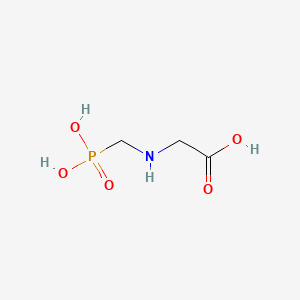
Formulations
Glyphosate 41% SL is available in various formulations to suit different application needs. It includes the acid form, monoammonium salt, diammonium salt, isopropylamine salt, potassium salt, sodium salt, and trimethylsulfonium or trimesium salt. The isopropylamine salt is the most commonly used formulation in herbicide products.
Why Use Glyphosate 41% SL?
This strong Herbicide is highly versatile and can be used in a variety of settings for effective weed control:
- Agricultural Uncultivated Areas: Perfect for clearing weeds from unused farmland to prepare for future planting.
- Ornamental Gardens: Keeps your flower beds and decorative plants free from invasive weeds.
- Driveways and Walkways: Eliminates weeds growing in cracks and along the edges of paths and driveways.
- Farm Buildings and Barns: Maintains weed-free zones around structures for better accessibility and cleanliness.
- Gravel Paths and Mulch Beds: Prevents weed growth in areas covered with gravel or mulch.
- Wildlife Openings: Helps in the establishment and maintenance of openings for wildlife habitats.
- Roadsides and Along Fences: Keeps these areas clear for safety and ease of maintenance.
- Parking Areas and Vacant Lots: Ensures these spaces remain weed-free and visually appealing.
- Lawn Replacement: Ideal for killing existing weeds and grasses to prepare for a new lawn.
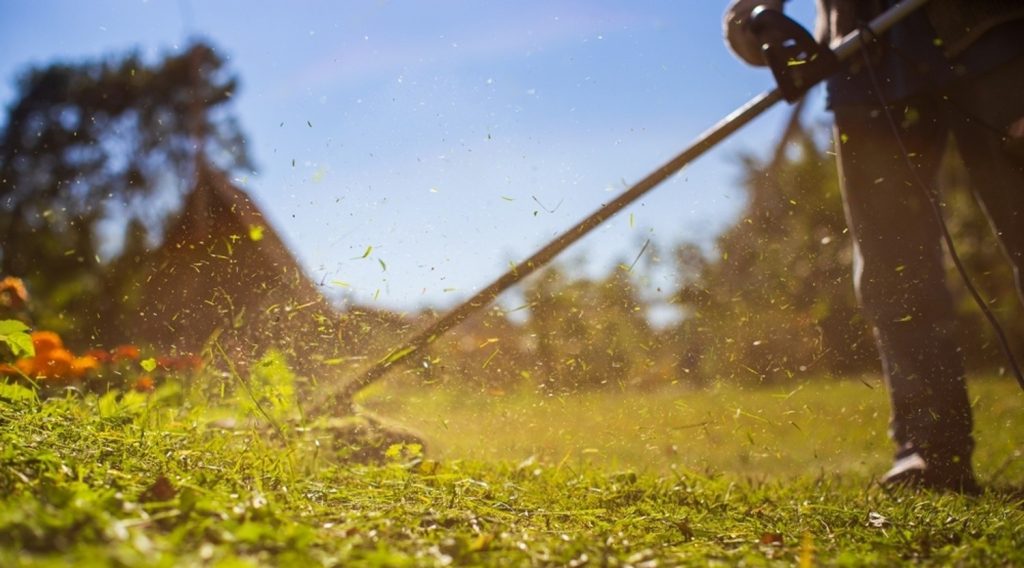
By using Glyphosate 41% SL in these common applications, you can ensure effective weed management and maintain the aesthetic and functional quality of various environments.
How Glyphosate 41% SL Works?
Mode of Action
Glyphosate 41% SL is a non-selective systemic herbicide that targets a critical enzyme in plants known as 5-enolpyruvylshikimate-3-phosphate (EPSP) synthase. This enzyme is part of the shikimic acid pathway, which is essential for the synthesis of aromatic amino acids necessary for protein production and plant growth. By inhibiting EPSP synthase, Glyphosate 41% SL disrupts the production of these vital amino acids, leading to stunted growth, loss of green coloration, leaf wrinkling, malformation, and eventually plant death. The herbicide is absorbed through the leaves and stems and translocated throughout the plant, concentrating in meristem tissues where growth occurs.
How to Use Glyphosate 41% SL
Dosage can be 0.8 -1.2 Ltr/ Acre
General Weed Control: Use along fences, paths, patios, sidewalks, driveways, and in brick and gravel walkways. Apply around trees, shrubs, ornamental plantings, flower beds, and buildings.
Spot Spraying: Target actively growing weeds in flower beds, around trees, shrubs, fences, driveways, and walkways. Avoid contact with desirable plants.
Landscaping: Prepare areas for planting ornamentals, trees, shrubs, rock gardens, and flower beds. Replant treated areas one day after application.
Lawn Renovation: Kill existing weeds and grasses, including the old lawn. Apply in spring or fall when temperatures are above 60°F.
Brush Control: Use when brush is green and growing. For tall plants, cut back and spray regrowth. Hard-to-control species may need a second application.
Stump Treatment: Prevent regrowth by treating stumps when vegetation is actively growing. Apply within five minutes of cutting down.
Vine Control: Cut vines to a height of 3-4 feet and spray remaining vine. Shield nearby shrubs and trees from spray drift.
How to Increase effectiveness of Glyphosate 41% SL
To maximize the effectiveness of Glyphosate 41% SL, apply it when weeds are actively growing. Here are some best practices:
Optimal Conditions: Apply on warm, sunny days with temperatures above 60°F. This speeds up the herbicide’s action. Ensure no rainfall is expected for at least 24 hours after application.
Calm Weather: Apply only when the air is calm to prevent drift onto desirable plants. Use shields like cardboard or plastic to protect nearby plants if necessary.
Reapplication: If it rains within two hours of application, reapply Glyphosate 41% SL. Rainfall or watering after two hours will not reduce effectiveness.
Application Equipment: Use plastic, aluminum, or stainless steel sprayers. Avoid galvanized or unlined steel sprayers, and do not apply with irrigation systems or sprinkling cans.
Post-Application Care: Rinse and flush sprayer components with water three times after use. Spray rinse water on bare soil or gravel. Thoroughly cleaned sprayers can be used for other products.
By following these guidelines, you can ensure efficient weed control and improved crop yields with Glyphosate 41% SL.
To maximize the effectiveness of Glyphosate 41% SL, consider these practices.
Safety and Toxicity
Signs of Toxicity
Glyphosate 41% SL, when improperly handled or overexposed, can lead to several toxic effects. Common symptoms include gastrointestinal irritation such as nausea, vomiting, diarrhea, and abdominal pain. In more severe cases, exposure can result in hypotension, cardiovascular collapse, respiratory distress, and metabolic acidosis. Skin exposure typically causes minor irritation, but ingestion or inhalation of concentrated glyphosate can lead to more severe symptoms, including corrosive injuries to the gastrointestinal tract and respiratory distress (University of Maryland Extension) (Life in the Fast Lane • LITFL).
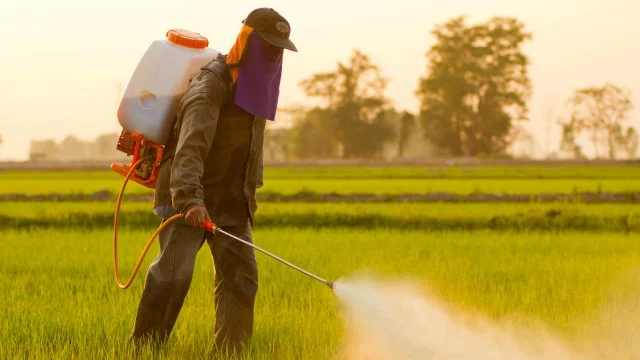
Protective Measures
To ensure safe usage of this strong herbicide, always follow these protective measures:
- Wear protective clothing: Gloves, aprons, and masks are essential to prevent skin contact and inhalation.
- Avoid direct contact: Do not mix with bare hands and avoid contact with mouth, eyes, and skin.
- Use clean equipment: Always use clean water to prepare the solution and avoid using galvanized or unlined steel sprayers.
- Apply in calm weather: Ensure that the application is done when the air is calm to prevent drift onto non-target plants.
- Post-application care: Thoroughly rinse and clean all equipment after use to prevent contamination.
In case of accidental exposure, follow the first aid instructions on the product label and contact a Poison Control Center if necessary.
Environmental Impact
Biodegradability: Glyphosate is easily biodegradable and non-volatile, meaning it breaks down in the environment without leaving long-term residues. This property reduces the risk of persistent environmental contamination.
Non-target Species: While glyphosate is effective against a broad spectrum of weeds, it is generally safe for non-target species when used as directed. The shikimic acid pathway targeted by glyphosate is specific to plants and some microorganisms, which explains its low toxicity to mammals and other non-target organisms (University of Maryland Extension) (Life in the Fast Lane • LITFL).
Is It Safe to Use Glyphosate 41% SL ? Is It Carcinogenic?
The safety of glyphosate has been extensively studied. Regulatory agencies, including the U.S. Environmental Protection Agency (EPA), have classified glyphosate as “not likely to be carcinogenic to humans” when used according to label directions. However, the International Agency for Research on Cancer (IARC) classified glyphosate as a “probable human carcinogen” based on hazard assessments. It’s important to note that risk assessments, which consider exposure levels, do not support a significant cancer risk under typical use conditions (University of Maryland Extension) (Life in the Fast Lane • LITFL).
Where to buy Glyphosate 41% SL
Are you wondering where to buy it ?
Criyagen’s Criya-Fight is an option we recommend. It is a non-selective, non-residual post-emergence herbicide formulated with Glyphosate 41% SL. Criya-Fight is very effective for use on many annual and perennial grasses and broadleaf weeds, as well as on many tree and woody brush species in crop land and non-crop sites.
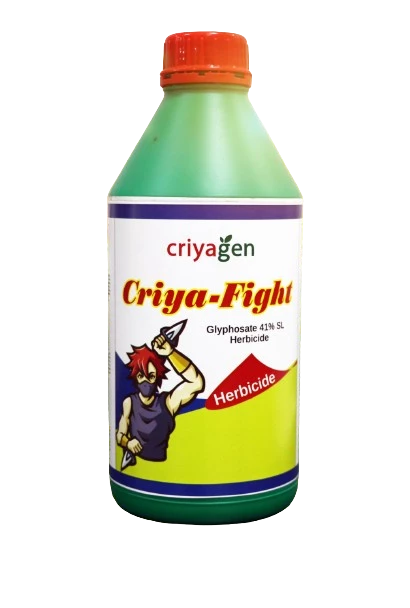
Criya-Fight is available at AgriApp. Download AgriApp from Playstore and avail a 100 OFF on your first order.
Read more about Criya Fight here.
Most importantly!!!
How to use it safely and effectively:
- Follow all application guidelines and protective measures.
- Apply during optimal weather conditions.
- Use appropriate equipment and ensure thorough post-application cleaning.
By adhering to these practices, you can maximize the benefits of this herbicide while minimizing potential risks (University of Maryland Extension) (Life in the Fast Lane • LITFL).